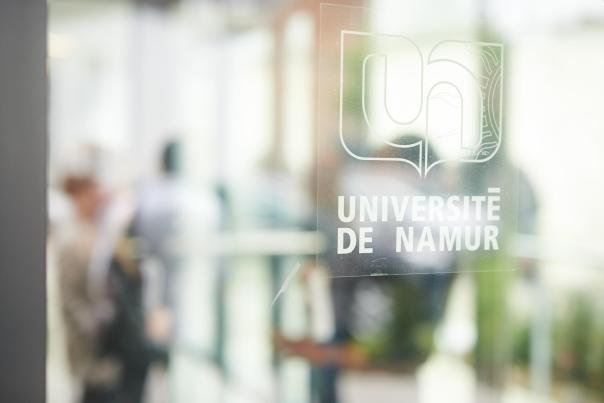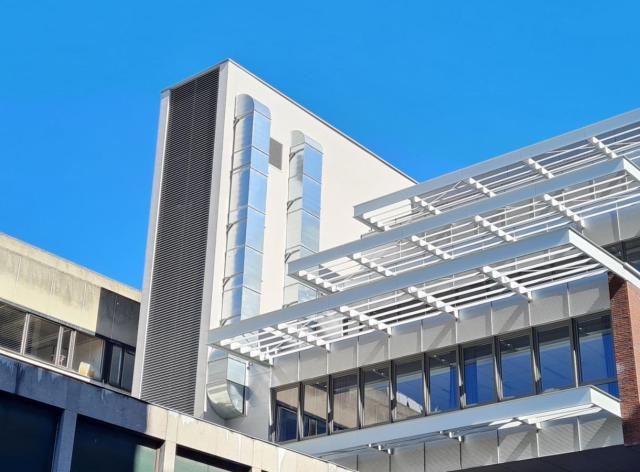Improving energy efficiency
The mission of UNamur's SIGeC revolves around several energy-related areas of activity:
- the sound management of energy consumption
- the construction, renovation and maintenance of buildings
Energy and water consumption awareness campaign 2022-2023
To raise awareness throughout the Community as winter approaches, UNamur is launching an internal campaign starting December 1, 2022. Together, let's reduce our impact.
Energy consumption
A practice of reporting on energy consumption has been in place at UNamur for a long time. Technical Services carry out electricity, gas and fuel oil consumption metering by building.
Over the years, several initiatives have been taken to reduce energy consumption through more rational use, of which the following are a few examples.

ELECTRICITY
- Management system:
- Appearance of centralized technical management to remotely control the start-up and shut-down of technical installations
- Implementation of variable speed drives to run electric motors at variable speeds
- Practice of energy load shedding by controlling quarter-hourly peaks to avoid power consumption peaks
- Scaling by a power generator
- to avoid power consumption peaks
- .hour peaks in order to avoid power consumption peaks
- Shielding by a generator
- Concentration of outdoor activities carried out on WE at UNamur within the same building as far as possible
- Realization of an energy cadastre carried out with the former GDD
- Supply:
- Collaboration with UCL to obtain an attractive energy supply cost from ENECO, where the energy produced is entirely from renewable sources
- Installation of photovoltaic panels on the roofs of the Domaine d'Haugimont buildings
- University annual expenditure of 20.000€ in green certificates
- Appliances:
- Exclusive choice of class A appliances, sharing of photocopiers and printers by several departments
- Replacement of infrared remote controls by mains-powered wall controls thanks to the CaNDLE 2015 project which has had the effect, in particular, of avoiding high consumption of electric batteries
- Lighting:
- Replacement of neon and incandescent spotlights with less energy-intensive lighting
- Placement of light regulators close to windows depending on brightness
- Installation of absence detectors at the rectorate,
- LED lighting at the Hôtel Orban
- Monitoring of consumption : reading by equipment using 140 meters
HEATING
- Boilers: gas condensing, cogeneration installation
- Insulation: progressive replacement of single glazing with double glazing
- Ventilation: use of variable speed drives, modulation of airflows according to air quality, installation of energy recovery on rejected air
- Regulation:
- heating switched on and off according to room occupancy as indicated in the room reservation system
- Lower set temperatures and time slots on heating
Building construction, renovation and maintenance
When working on projects, Technical Services ensures that opportunities to apply sustainable development to building construction and maintenance are seized:
- Designing a building in line with SD at the time of construction by advocating optimal use of modular spaces
- properly insulating the walls of relatively traditional buildings
However, Technical Services believes that it remains vital to act on consumer behavior through campaigns to raise awareness of everyday gestures that save energy.
Aiming for carbon neutrality
UNamur wanted to equip itself with the elements that would enable it to achieve carbon neutrality by 2050, as imposed by the European Climate Law. One of the elements targeted is none other than the most complete possible analysis of its greenhouse gas emissions generated across the entire campus by means of a Bilan Carbone (decision of the Board of Directors on January 22, 2021).
The purpose of this study is to carry out the Bilan Carbone of the entire activity of the University of Namur according to scope 1, 2 and 3 of the Bilan Carbone method. It has been prepared for the period from January 1, 2022 to December 31, 2022. The organizational scope was established according to the consolidation methodology based on operational control. The inventory includes:
- Direct emissions sources arising from the University of Namur's activities and related to fixed and mobile equipment, i.e. emissions due to combustion and fugitive emissions.
- Indirect emissions sources due to imported energy, i.e. emissions due to the consumption of electricity purchased by the company.
- Sources of indirect emissions due to the transport of people, i.e. emissions due to commuting and business travel.
- Sources of indirect emissions due to products purchased and used, i.e. attributable emissions
Once completed, the Bilan Carbone then enables an action plan to be defined. Workshops are currently being organized within the university community to establish these actions in the light of the study results that have been presented.
These will be followed by specific working groups established according to the major themes identified.
